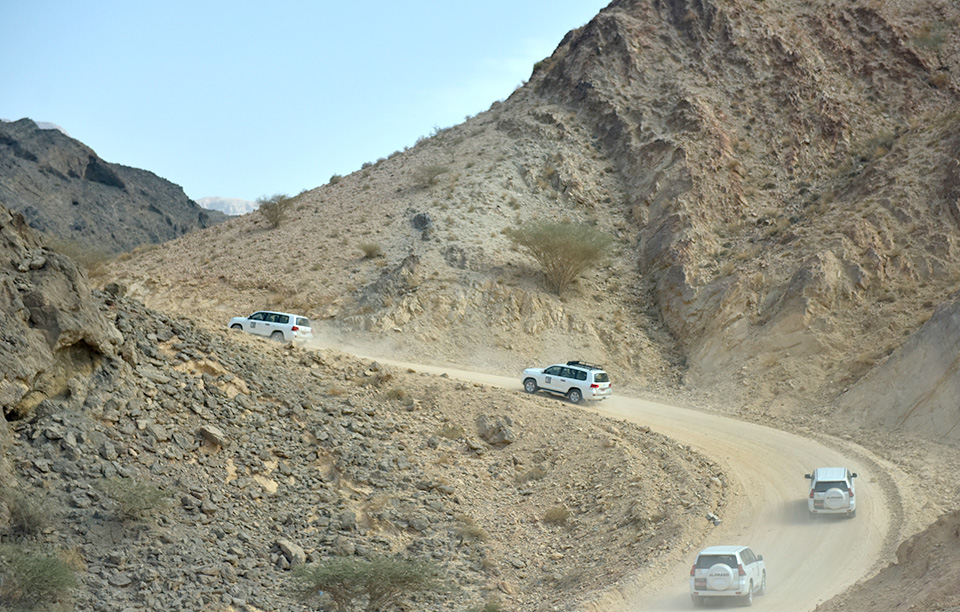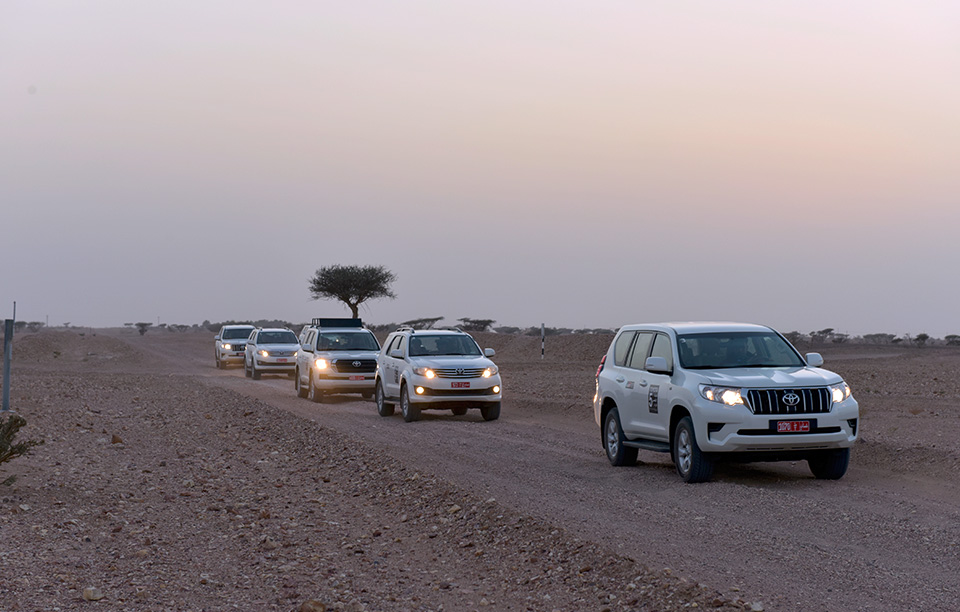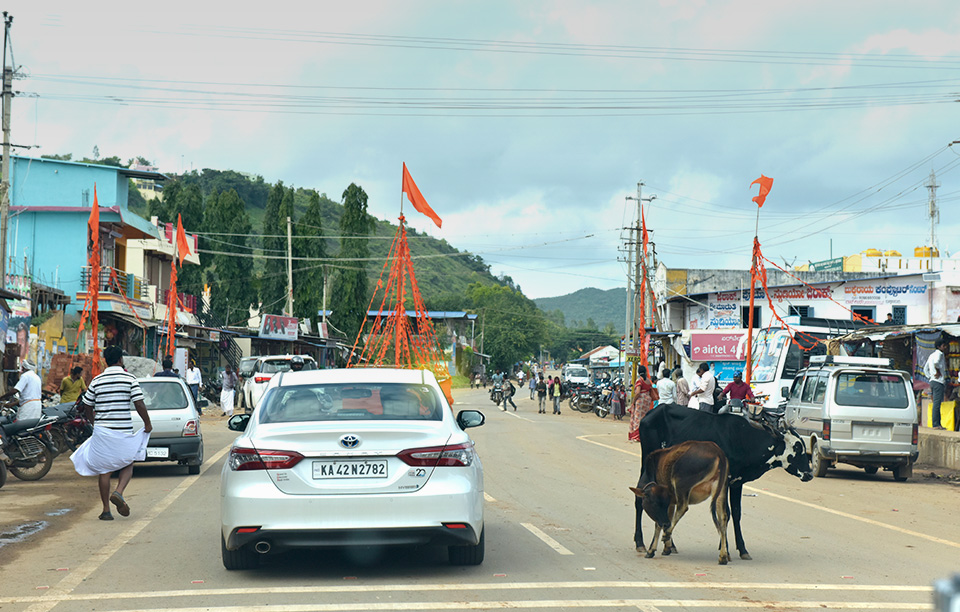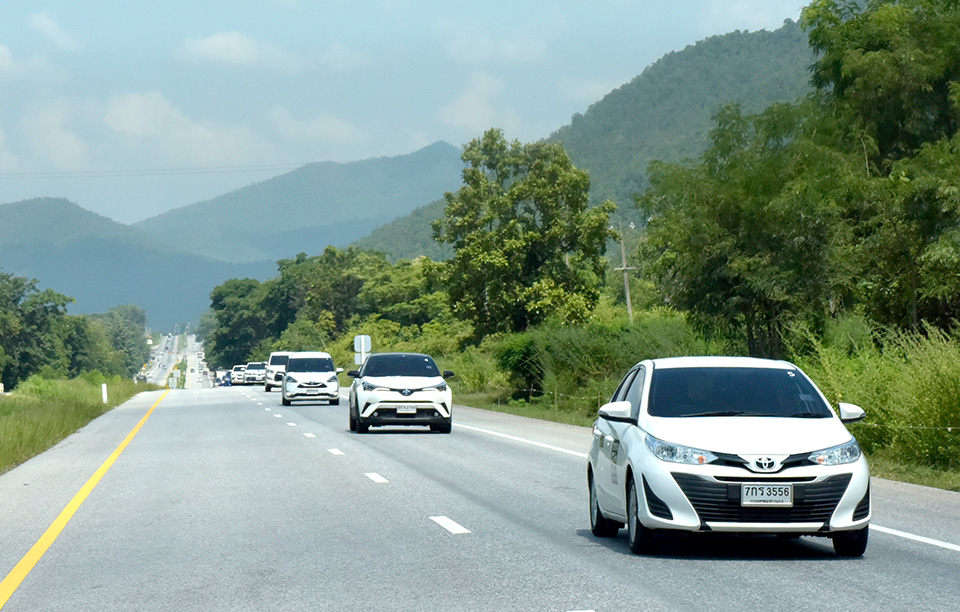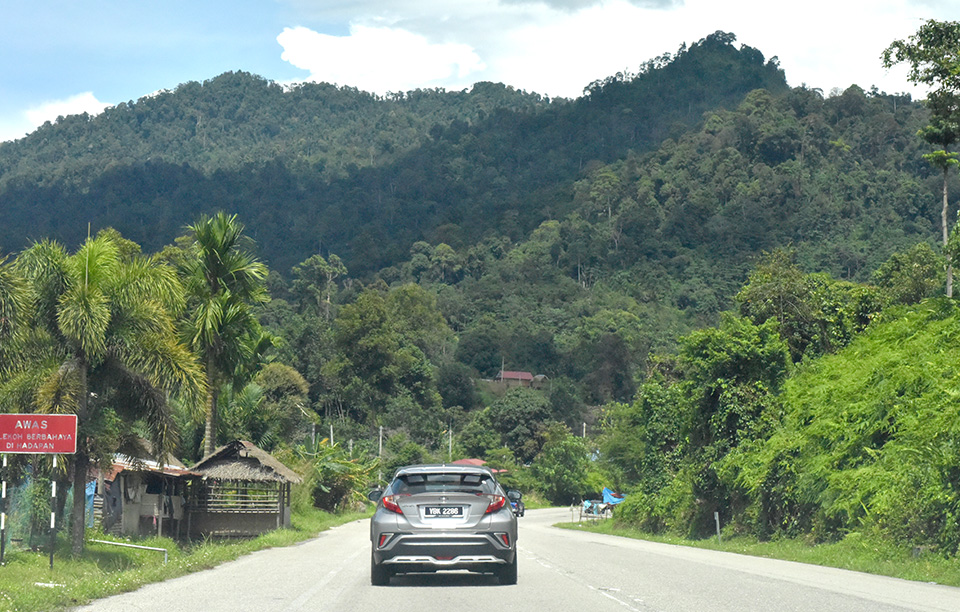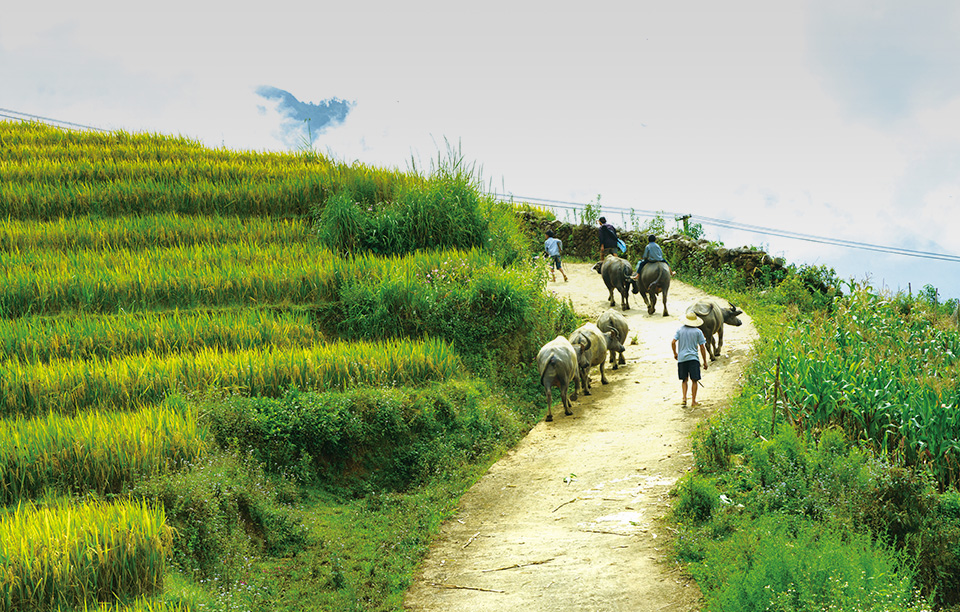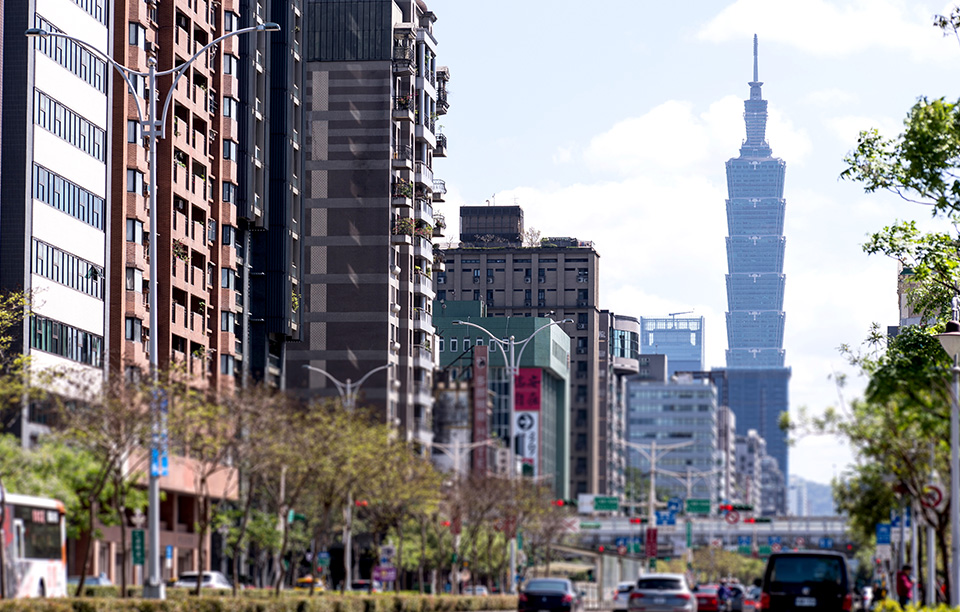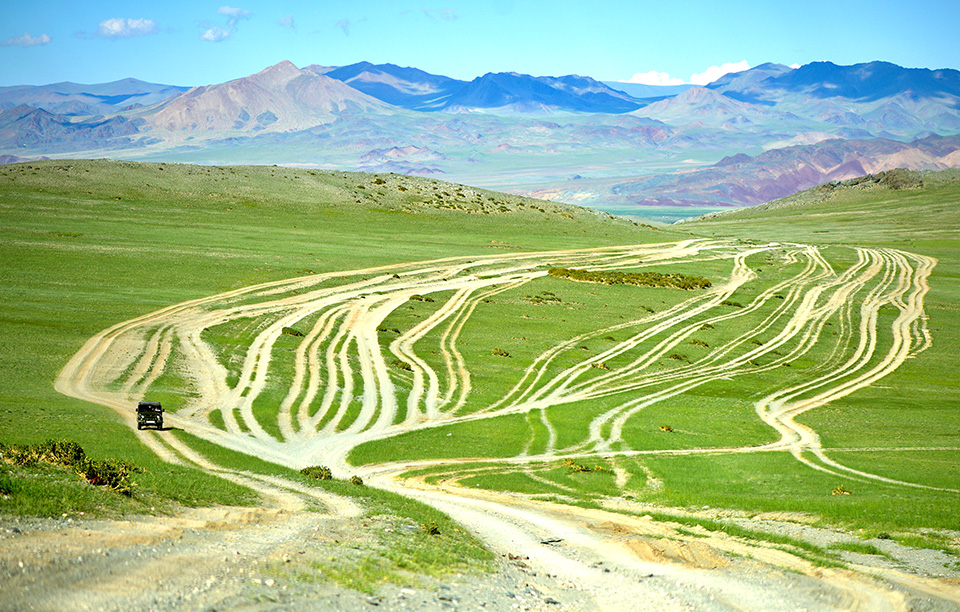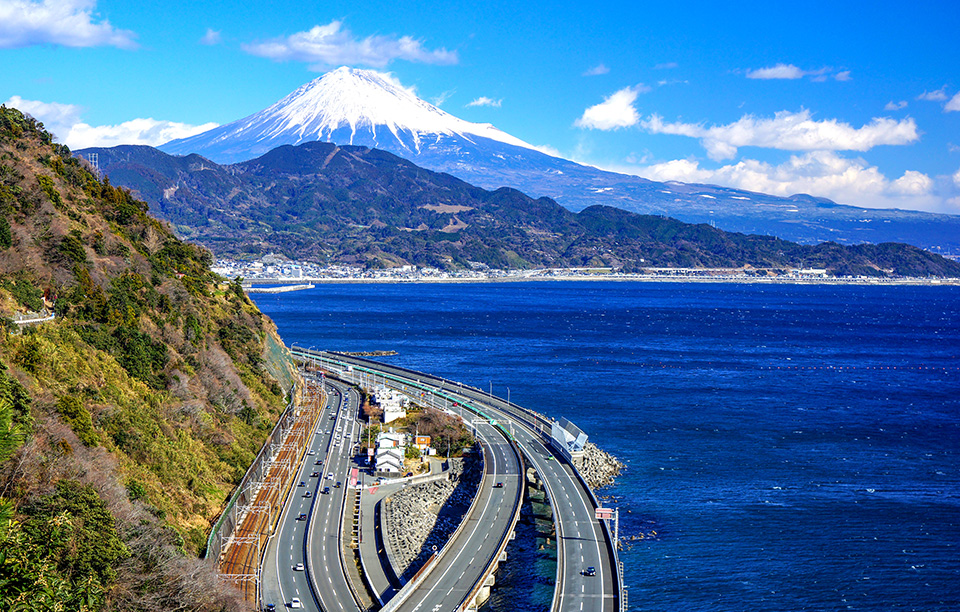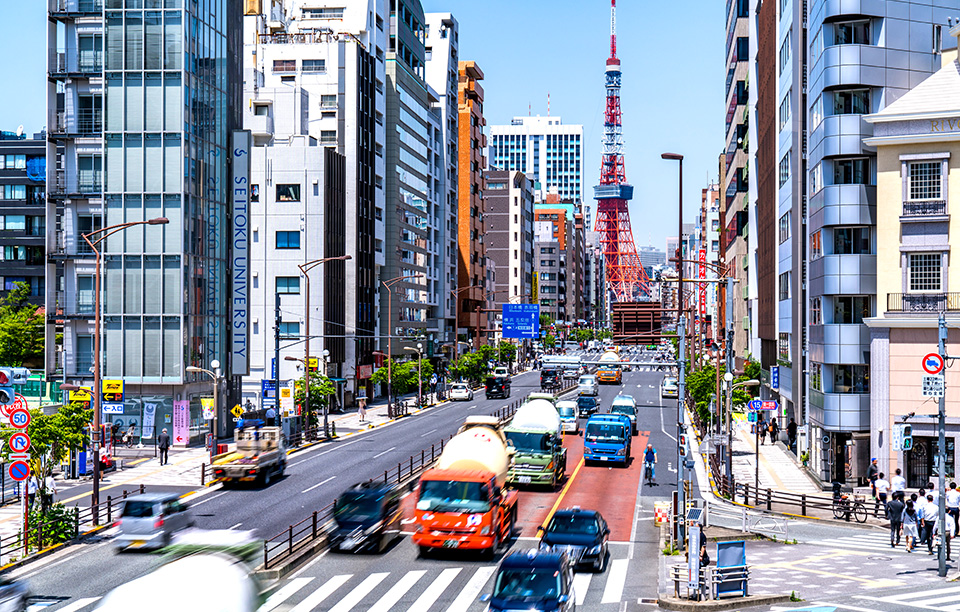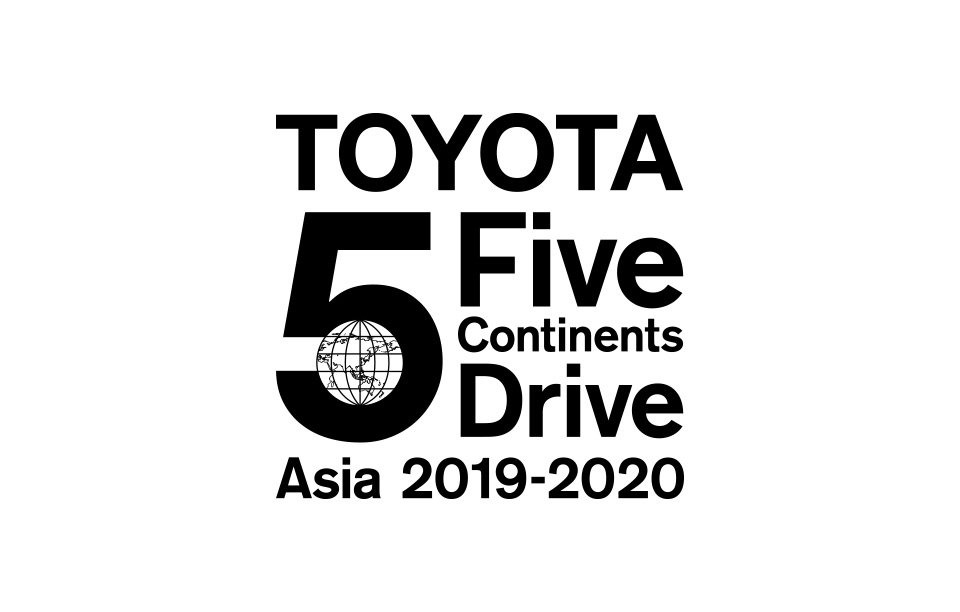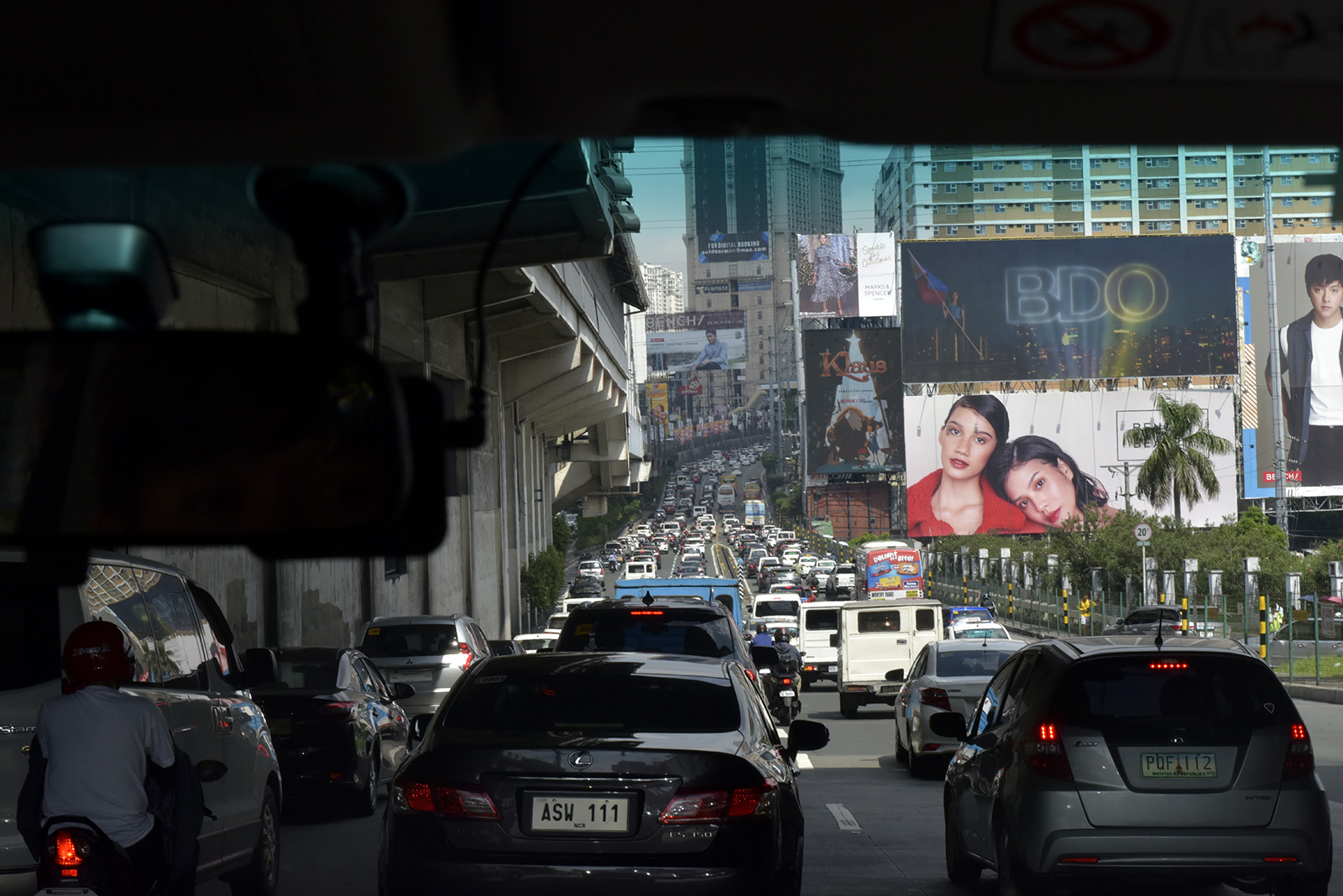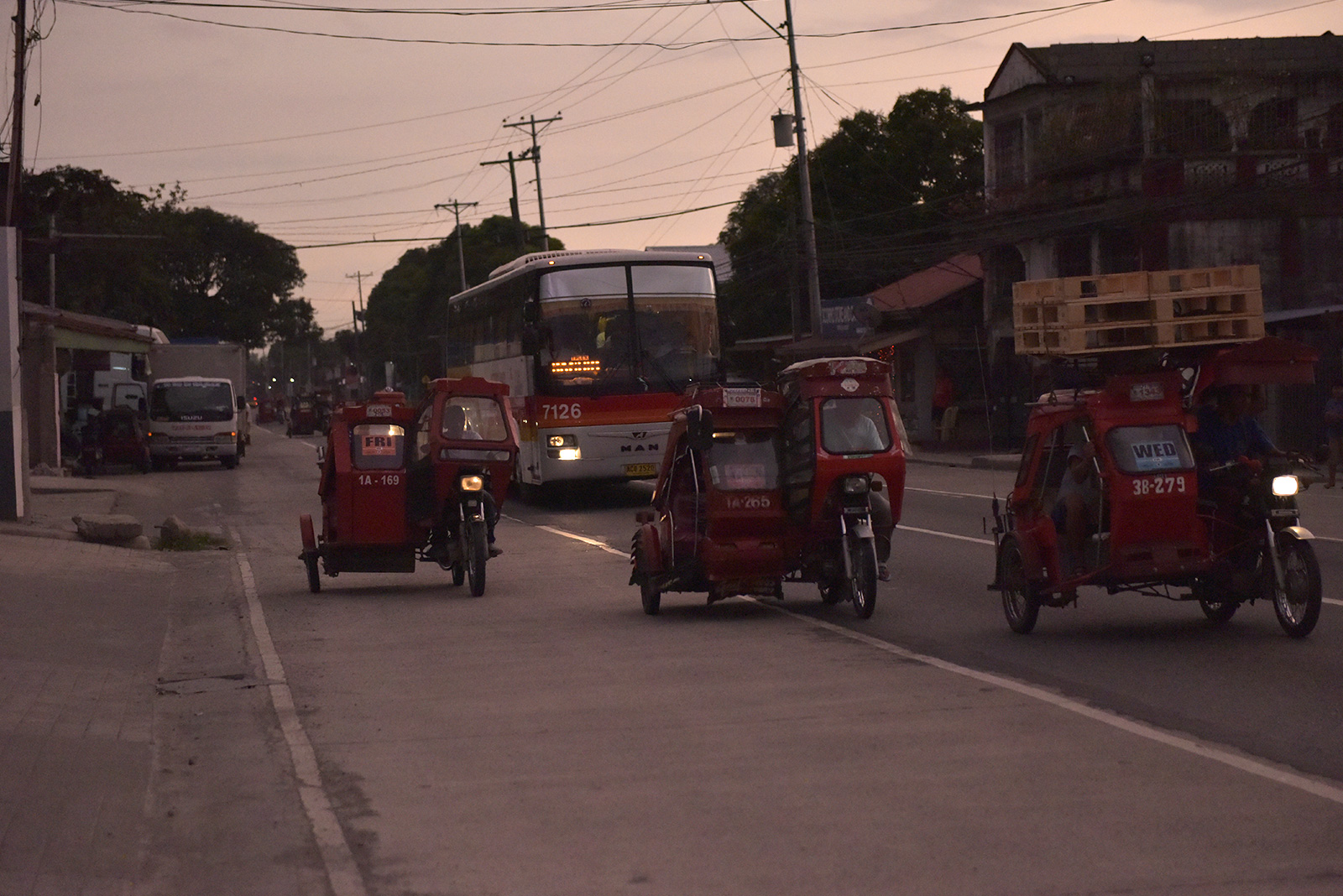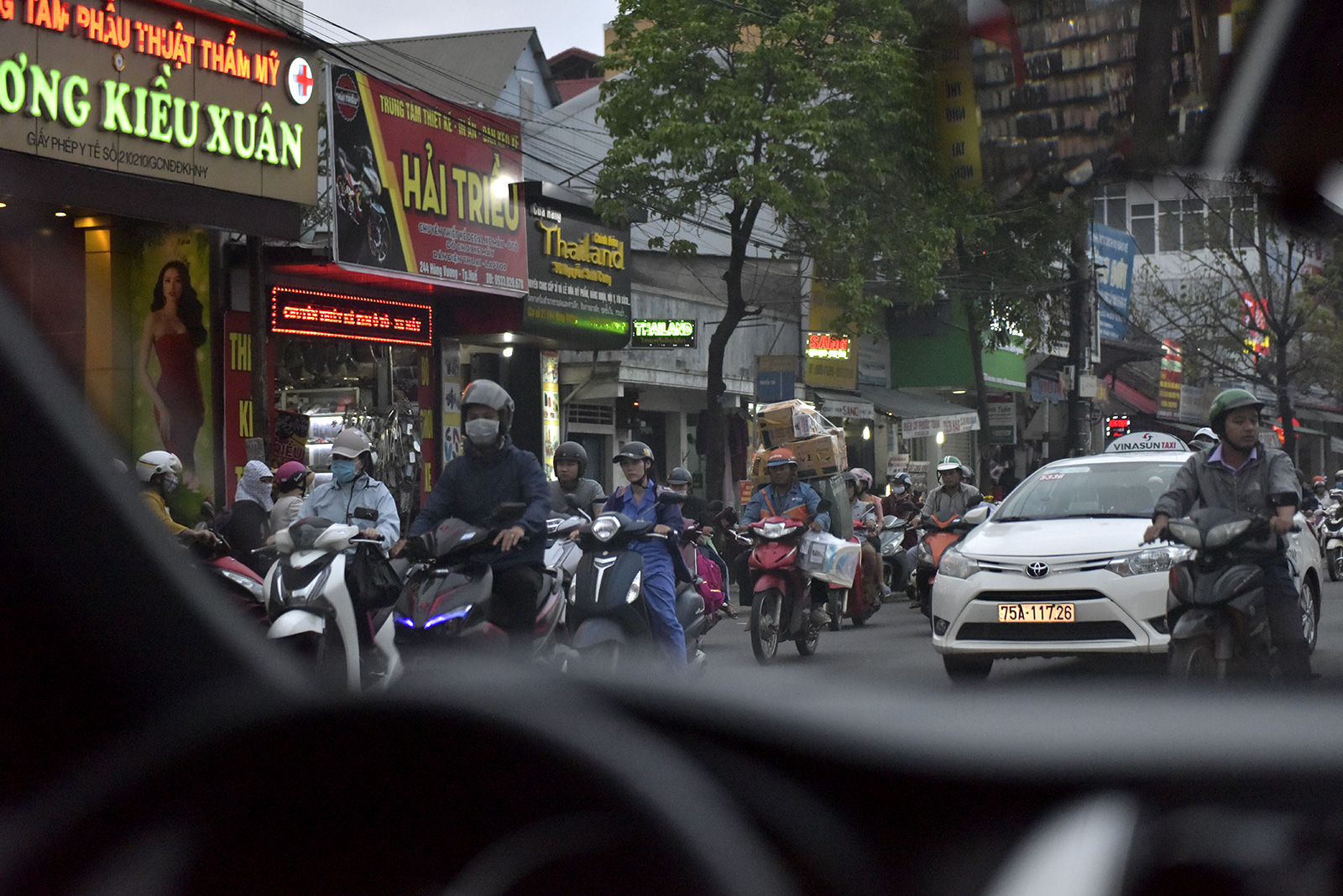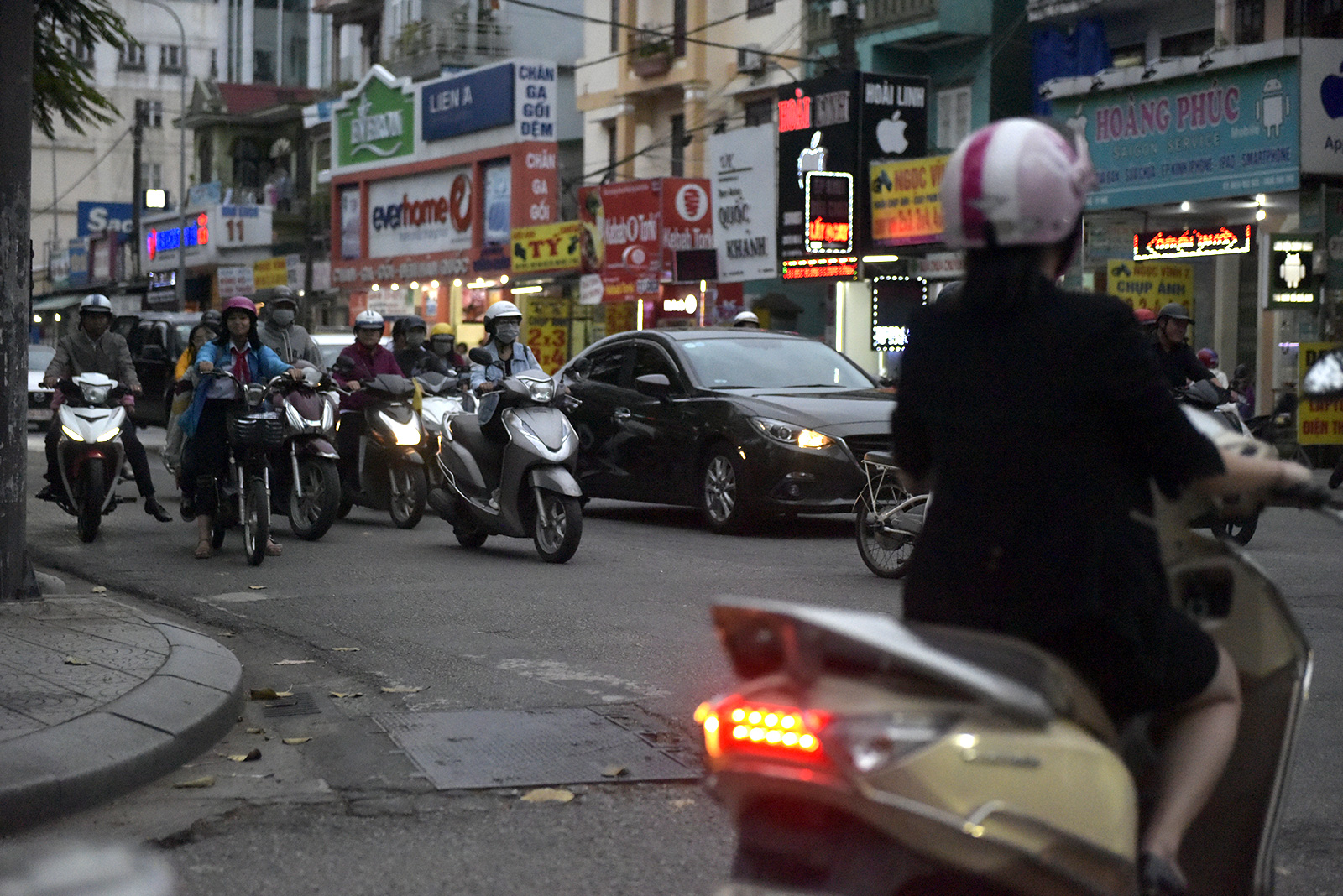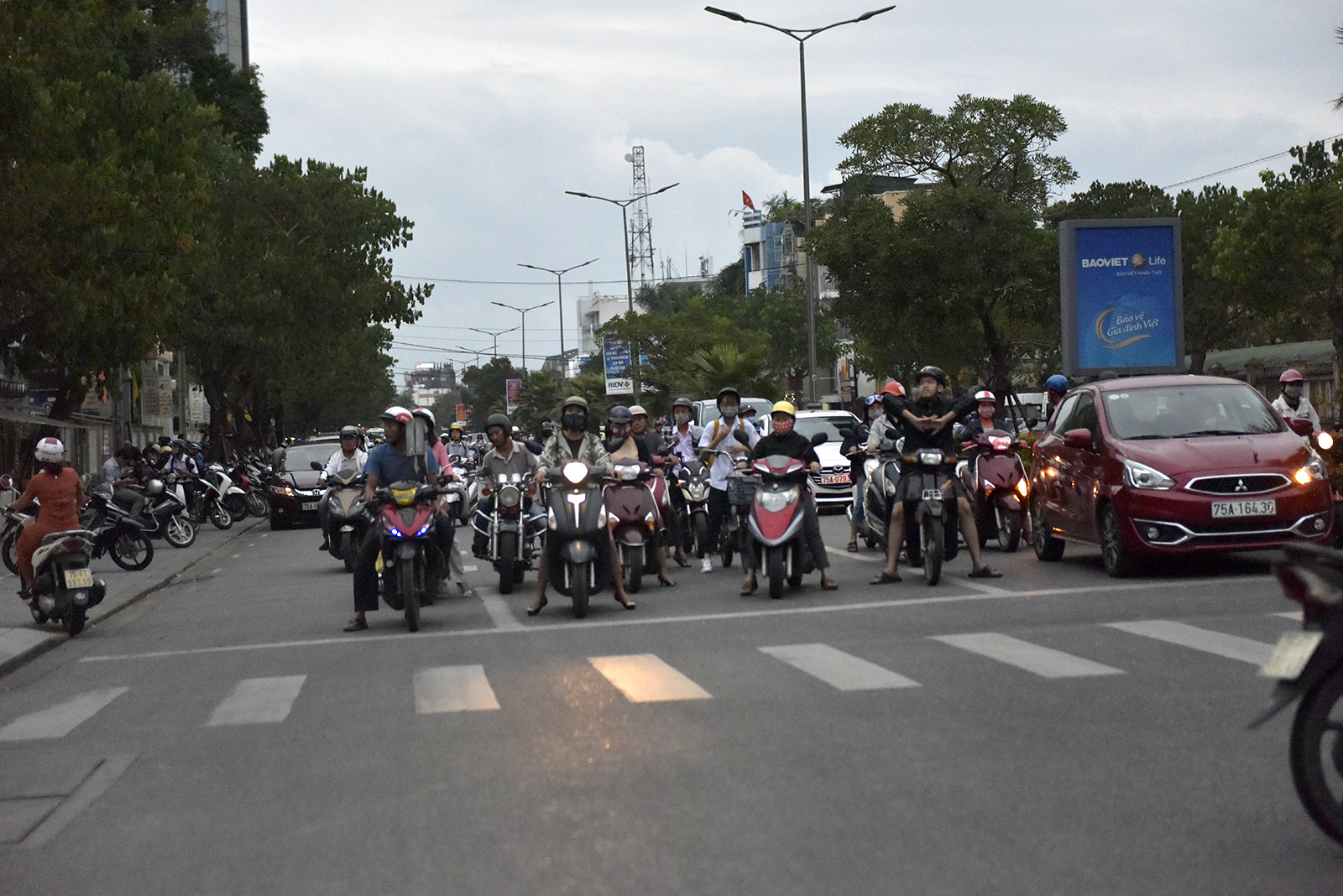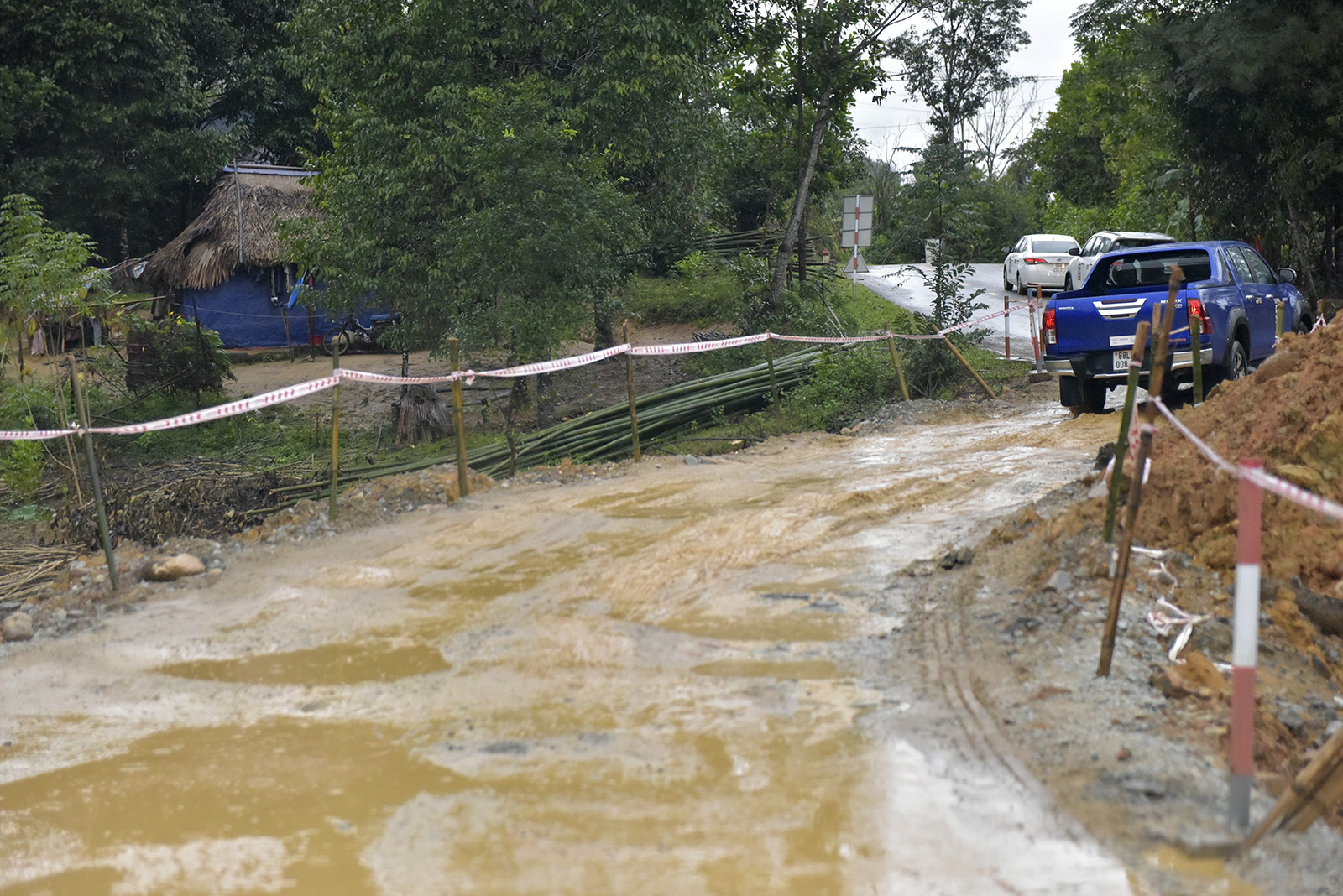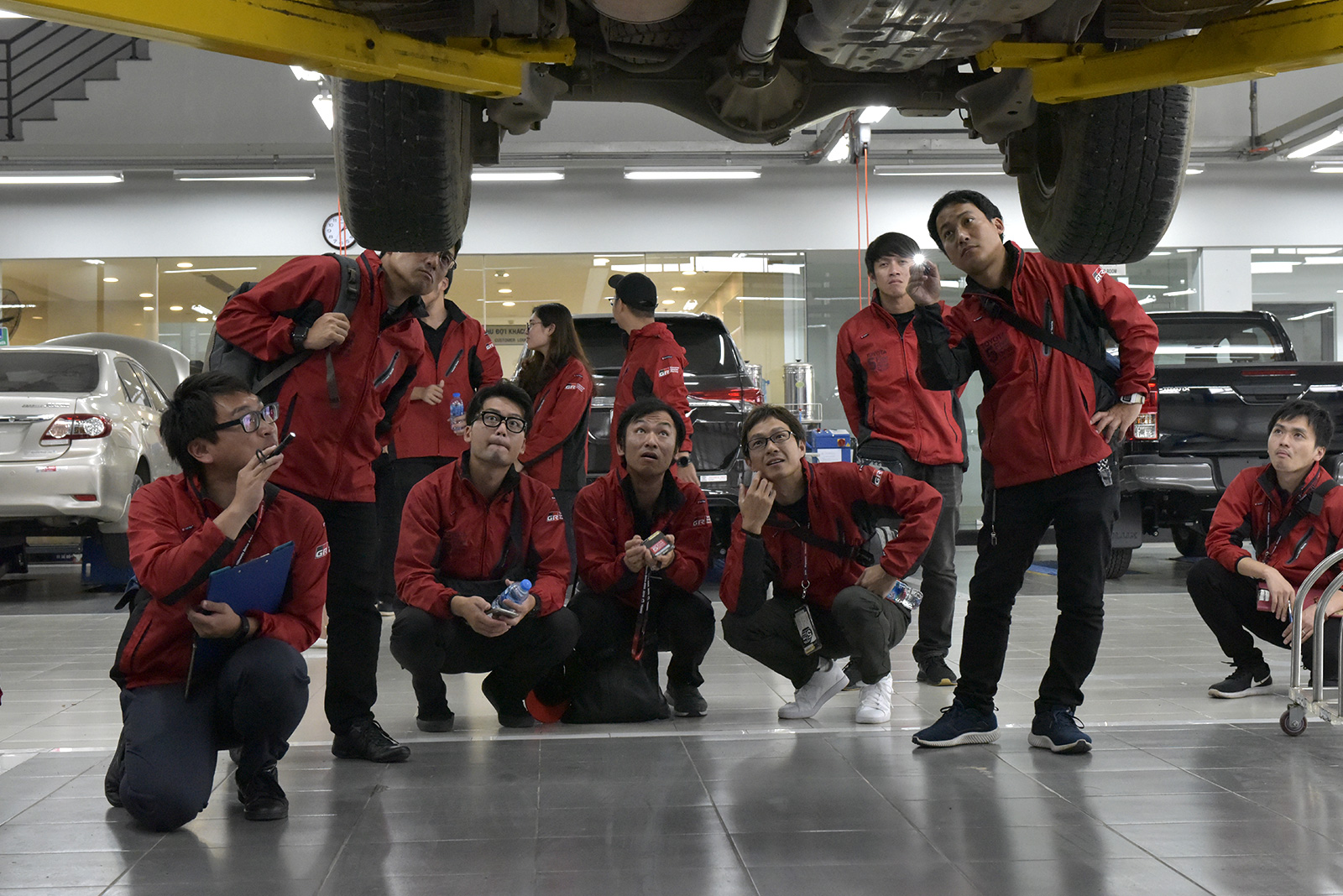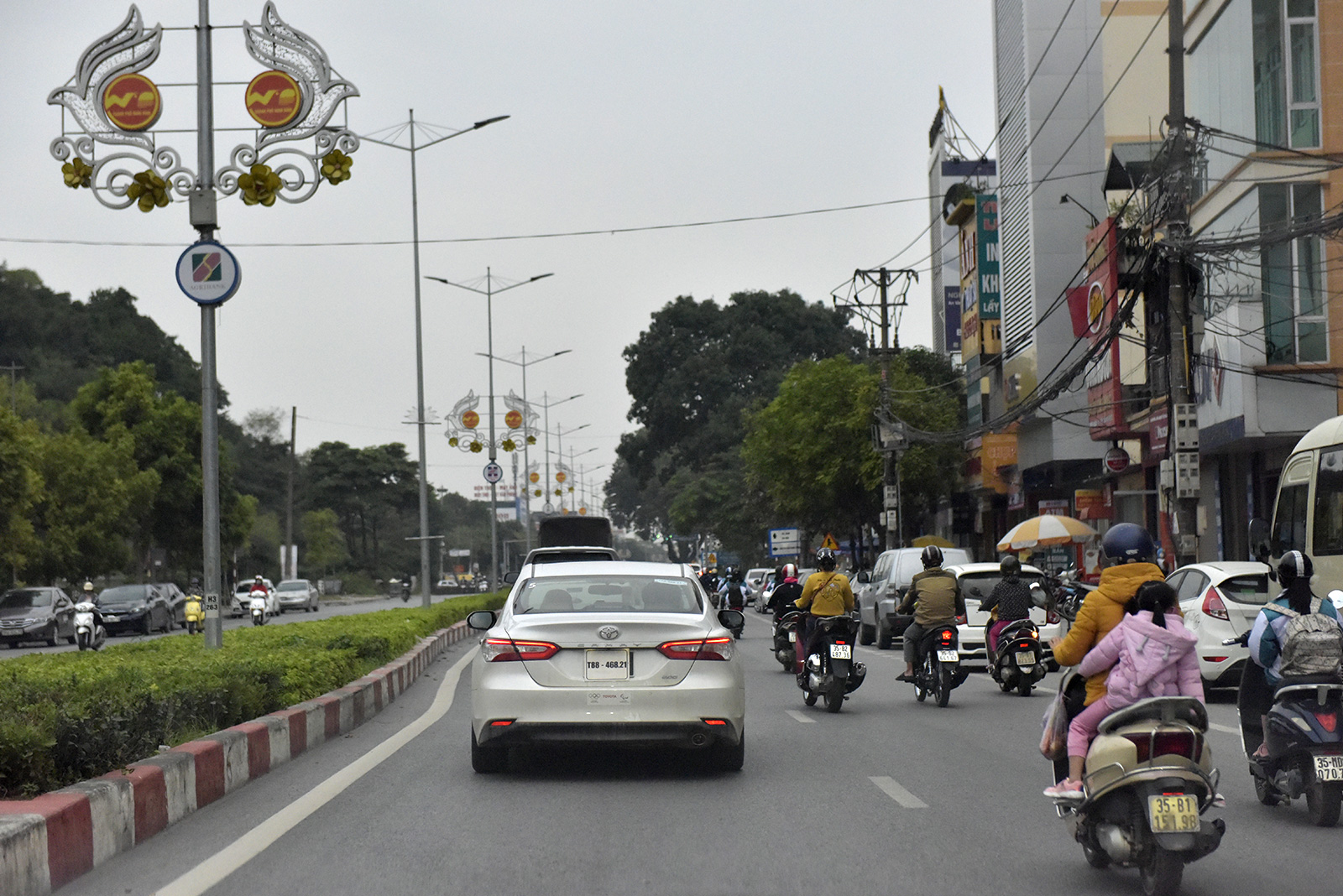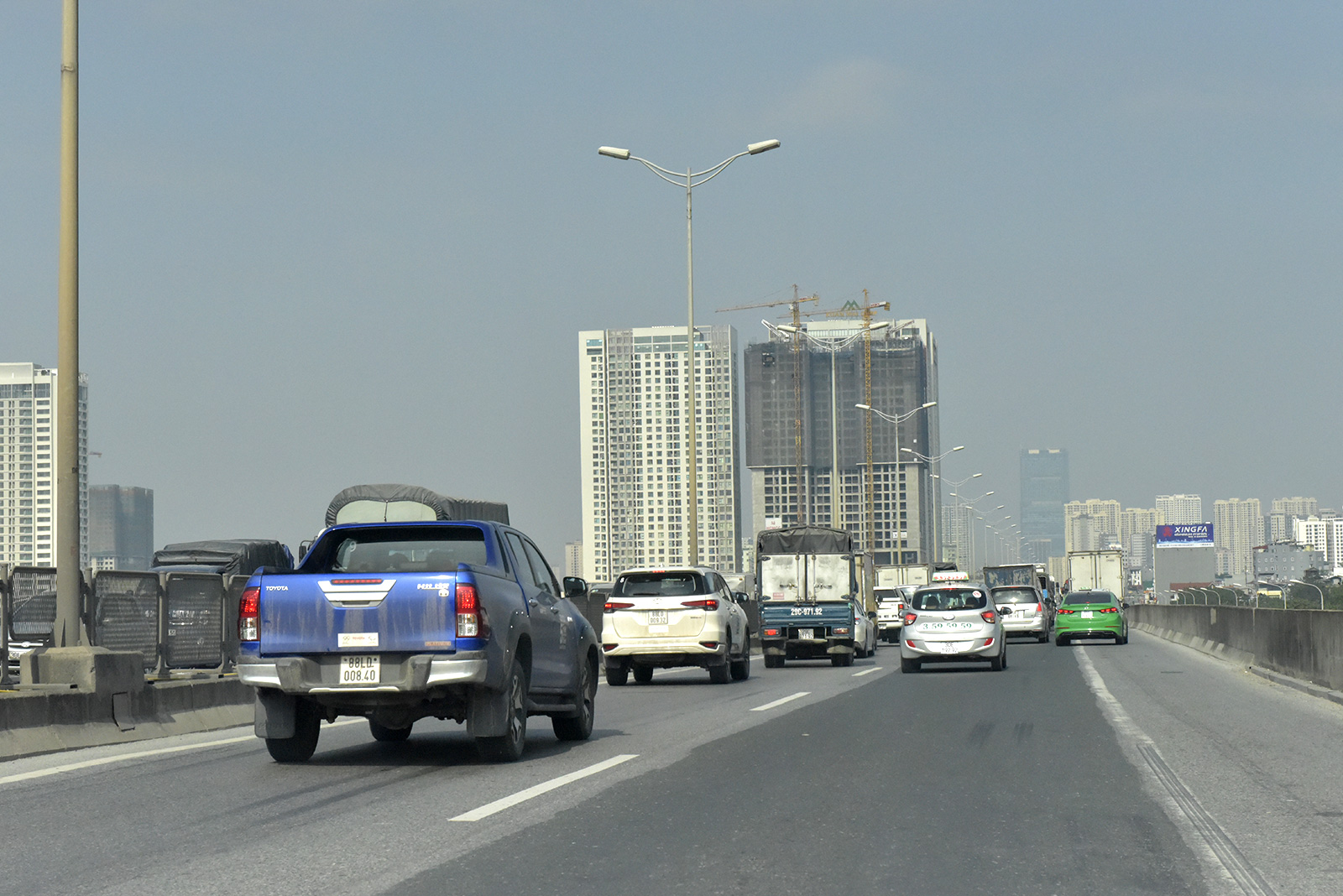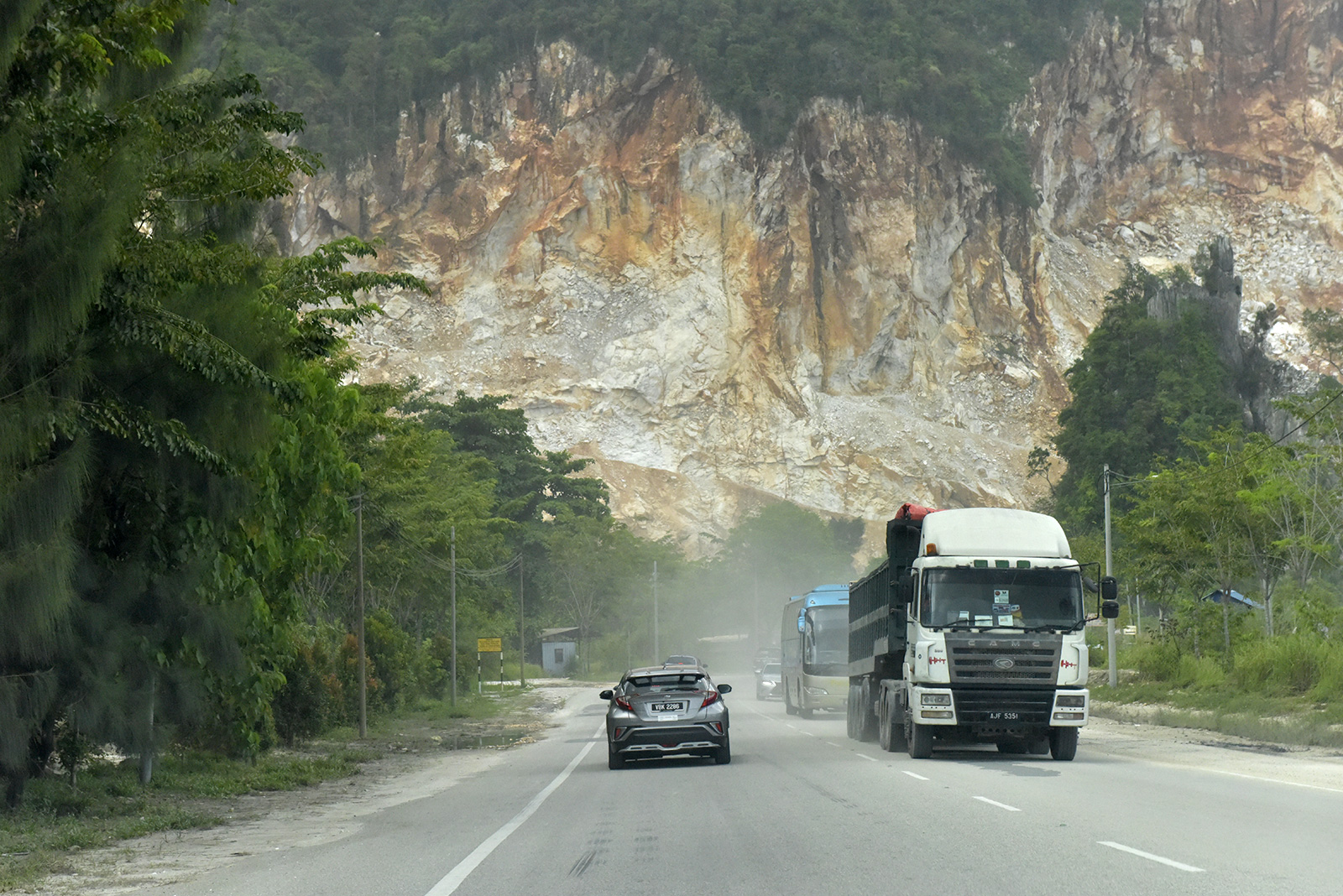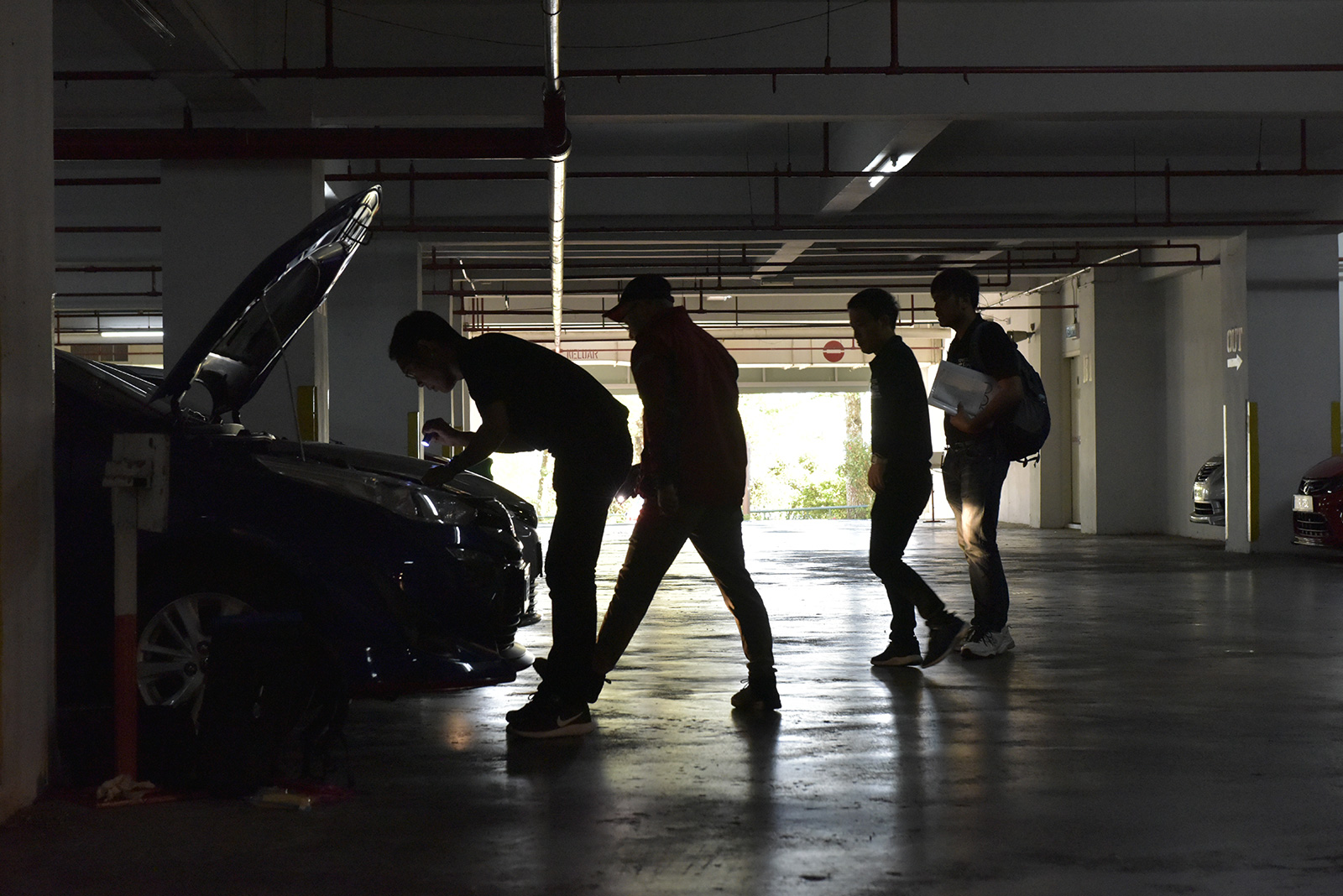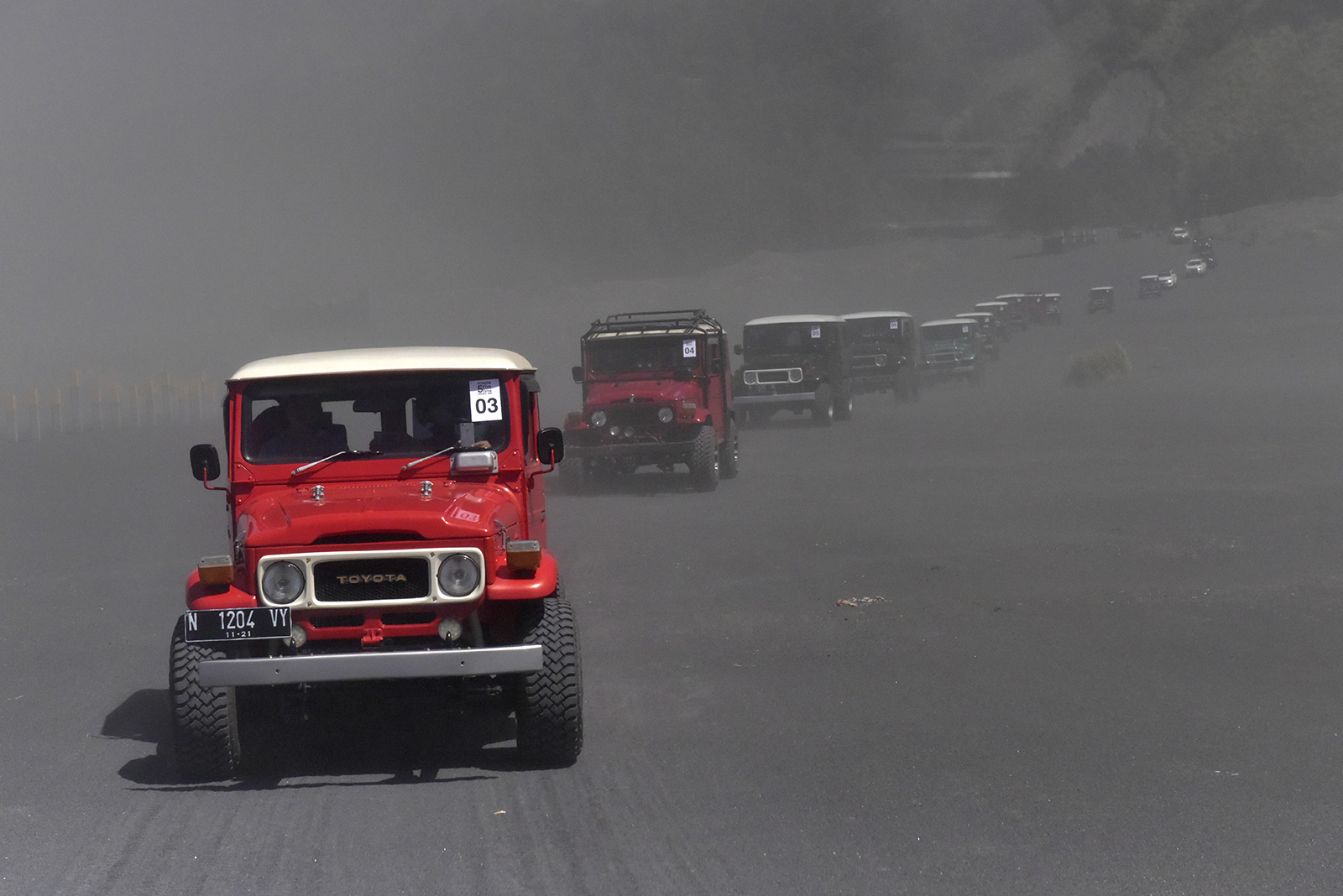After the Middle Eastern stage of the 5 Continents Drive Project Asia in February and March is the Indian and Southeast Asian stage. The road conditions in India, Myanmar, and Thailand, the three countries making up the first part of the stage, change every few kilometers. The weather changes dramatically during the day. People and animals cross roads whenever they feel like it. Motorcycles ride down roads the wrong way. Road surface conditions are rough, with potholes too many to count.
When they drive, the team members need to have intense concentration and the ability to respond calmly to whatever happens as well as to clearly signal their intentions. The experience of having to pay full attention to the roads drove home to them the fundamental fact that people place their lives in the hands of a car.
In Malaysia, Singapore, Indonesia, the Philippines, and Vietnam, the countries making up the second part of the stage, the team learned about the unique conditions in each of these countries, from their economies to gridlock traffic and car and motorcycle drivers who at a glance seem to drive without rules. By the time the team arrived in Vietnam, they had built up experience and teamwork that allowed them to readily overcome the difficulties of driving on challenging roads.
The team members are able to learn many things from their conversations with local customers, but only by taking the wheel themselves can they also share many of the sensory experiences. The team members will take the experiences they have gained driving through these eight countries back with them as the seeds for making better cars.
INDIA & SOUTHEAST ASIA
Duration
51 days Staring 16 September through 29 November.
Route
8,600km in total across the following countries.
India, Myanmar, Thailand, Malaysia, Singapore, Indonesia, Philippines, Vietnam
Vehicles involved
Land Cruiser 200, Fortuner, Hilux Double Cab, Prado, Rush, Vios, Yaris, Yaris Ativ, Yaris Hatchback, Prius PHEV,C-HR, C-HR HV, Sienta, Alphard, Camry HV, Corolla Altis, Corolla Altis HV, Avanza, Hiace, RAV4 HV, Innova, Innova Crysta, Innova Touring Sport, Innova Venturer, Glanza, Suzuki Vitara Brezza, Xenia(Daihatsu)
Employees
115 consisting of employees from Toyota Motor Corporation,Suzuki,Daihatsu and local affiliates.
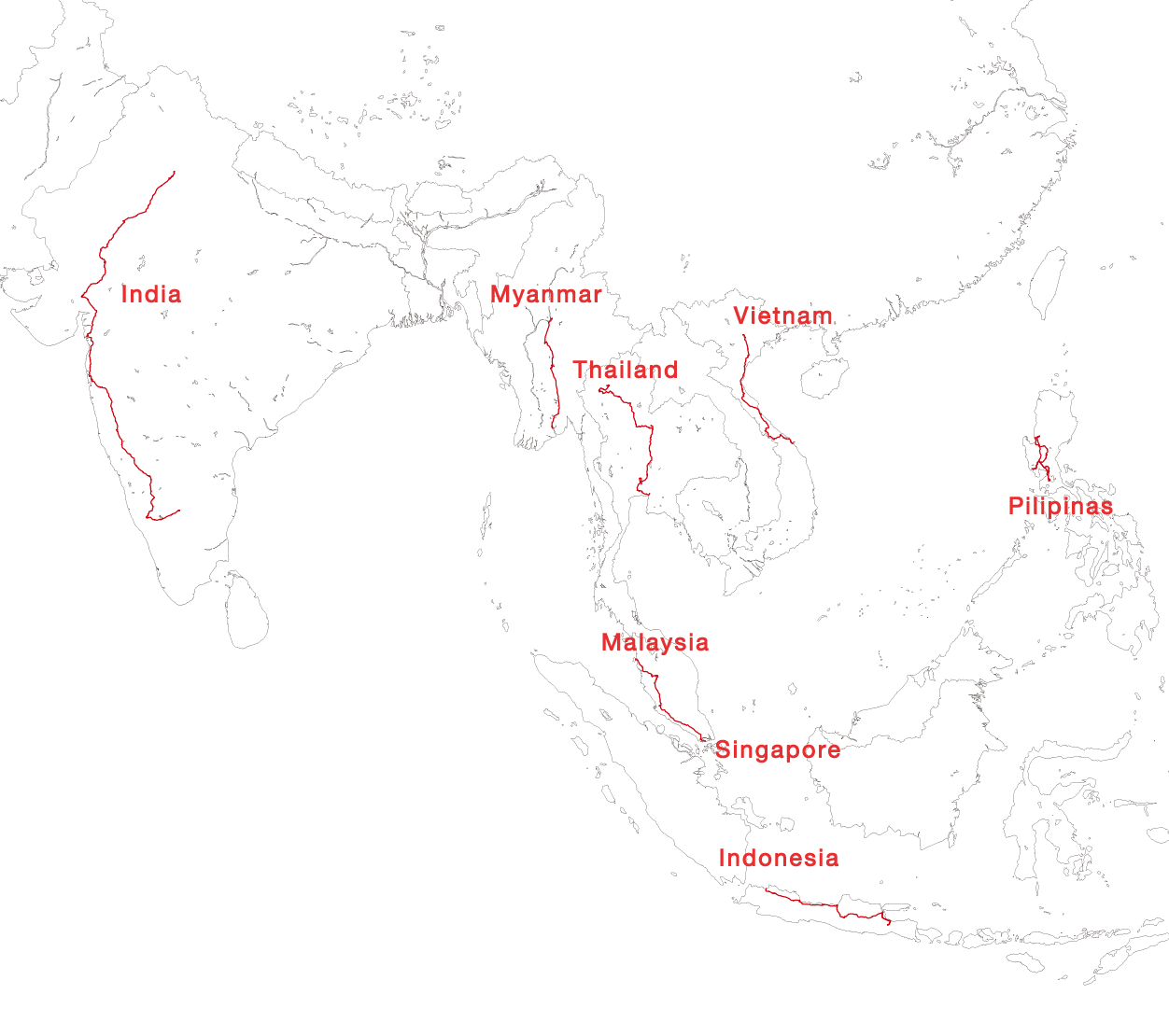
INDIA & SOUTHEAST ASIA REPORT
-
01 Bengaluru > Surat
Horns speak intentions At last, the Indian and Southeast Asian stage of the 5 Continents Drive Project had begun. Nine cars and trucks carrying the team members left Toyota Kirloskar Motor (TKM) plant in Bengaluru and headed for their destination of New Delhi. The first day the team made it to Madikeri. India’ s culture and traffic rules are very …
-
02 Surat > New Delhi
Vicariously experiencing the spirit that underpins Toyota’s founding. The team was headed for Ahmedabad, the largest city in Gujarat State. Kyosuke Yagura of the Product Aud it Department, CV Vehicle Evaluation and Engineering Division,frequently traded opinions about the seat comfort and suspension of theToyota Glanza. …
-
03 Yangon > Chiang Mai
Driving fueled by joy The team went to see the Thilawa Special Economic Zone that was established in 2014 on the southern outskirts of Yangon, the largest city in Myanmar. Toyota plans to produce the Hilux here when its new plant starts operations in 2021. Osamu Yaoita of the Advanced Vehicle EngineeringDevelopment Division, who is serving …
-
04 Chiang Mai > Bangkok
A common language called cars The 5 Continents Drive team left Chang Mai and headed to the ancient city of Lampang, driving on the mountain roads of Doi Inthanon National Park. Although Yasuyuki Ishii of the Drivetrain-EHV Design Division No. 3 says that his English is weak, he doesn’ t shy away from communication with the local team members. …
-
05 George Town > Singapore
High-speed, winding roads. The latter half of the Asian stage started out on the Malaysian island of Penang. The city of George Town still retains its historical character, but with motorcycles in numbers never seen in Japan waiting at traffic signals. Many people walk in the roads, while trucks also try to pass by on narrow streets. …
-
06 Jakarta > Surabaya
Network forming the future foundation. Motorcycles thread though every available gap on both sides of cars. Just how many lanes the road has is a mystery. At a glance, there appears to be no order, but the team sees almost no accidents. And no cars on the road with dents from collisions. The streets of Jakarta are inscrutable. …
-
07 Santa Rosa > Manila
Appropriate quality, the cars that are needed. The Philippine capital of Manila has some of the world’s worst traffic congestion. Roads with five lanes in one direction are completely filled with cars. A little farther on the lanes get reduced to four, then three, then two, and merging cars nose their way in. …
-
08 Da Nang > Hanoi
Manufacturing plant resolve, and the roads of Vietnam. The team headed north to the capital of Hanoi from the city of Da Nang in the middle of Vietnam. There is a highway along the coast, but they took a route called the Ho Chi Minh Road that goes through the mountains. …
MIDDLE EAST
With the beginning of the Asian stage underway, Drive Project has traversed six Middle Eastern nations: Saudi Arabia, Oman, Qatar, Kuwait, Bahrain and the UAE. As they drive each country, our drivers have been amazed by the various roles cars serve on the region’s roads. In fishing villages, they tug boats. Out in the wilderness, a car’s performance can mean the difference between life and death. Yet there are also places along the Drive Project route where the concept “fun to drive” is well appreciated.
Our team drivers got to experience the roads of the Middle East through intense stimulation of all of senses. A level of perception that would never have been possible on test courses. But Asia is vast. The 5th Continents Drive Project has just begun.
Duration
20 days, starting February 20 through March 11.
Route
3,500km in total across the following countries.
Kingdom of Saudi Arabia, Sultanate of Oman, State of Qatar, State of Kuwait, Kingdom of Bahrain, United Arab Emirates
Vehicles involved
Land Cruiser 200, Land Cruiser Prado, Hilux, Fortuner, Avalon, FJ Cruiser, Camry Hybrid, Camry HEV, RAV4、Rush, Mirai, Prius PHV, Lexus LX570
Employees
40 consisting of employees from Toyota Motor Corporation and local affiliates.
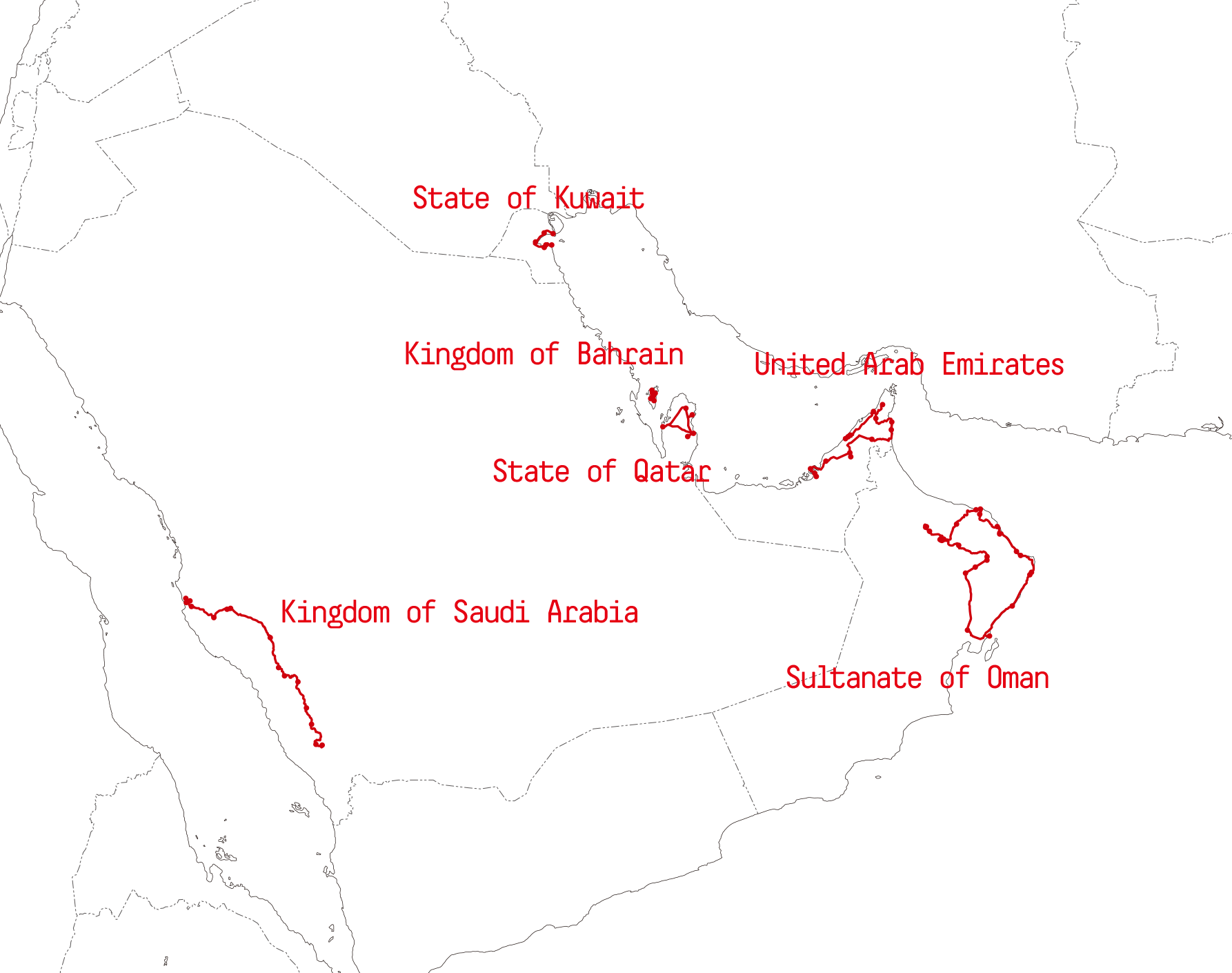
MIDDLE EAST REPORT
-
01 Jeddah > Abha
A nerve-racking commotion. In the bus taking us from the airport to the hotel in Jeddah, Saudi Arabia, we were already awed by the commotion. The car that suddenly cut in front of us without so much as a turn signal made me unwittingly brace for impact, and I let out an involuntary cry at seeing how close the cars were to each other. The Drive Project…
-
02 Muscat > Doha
A lifeline road deep in the mountains of Oman. The first day of the Drive Project in Oman, we headed for a dry riverbed, called wadi in Arabic. Many people come here from urban Muscat for leisure and recreation. The highway was c lean and high grade, e ven compared with ones in Japan. We went from the highway to an unpaved road that took us into the mountains.…
-
03 Doha > Abu Dhabi
The cars needed in rapidly changing cities. The Drive Projec t team spent a whirlwind week driving through several countries. Concentrating on the roads during our short stay, we searched for hints on how to make ever-better cars by observing the way people live their lives. Yasunari Fujii of the Lexus Body Engineering Division peppered the local…
-
04 Abu Dhabi > Dubai
The cars demanded by new roads. The UAE was the sixth and final country in the Middle Eastern leg of the Drive Project. In Abu Dhabi we inspected the vehicles like we always do. We take a careful and pragmatic approach even f or tasks that we repeat day after day.…
